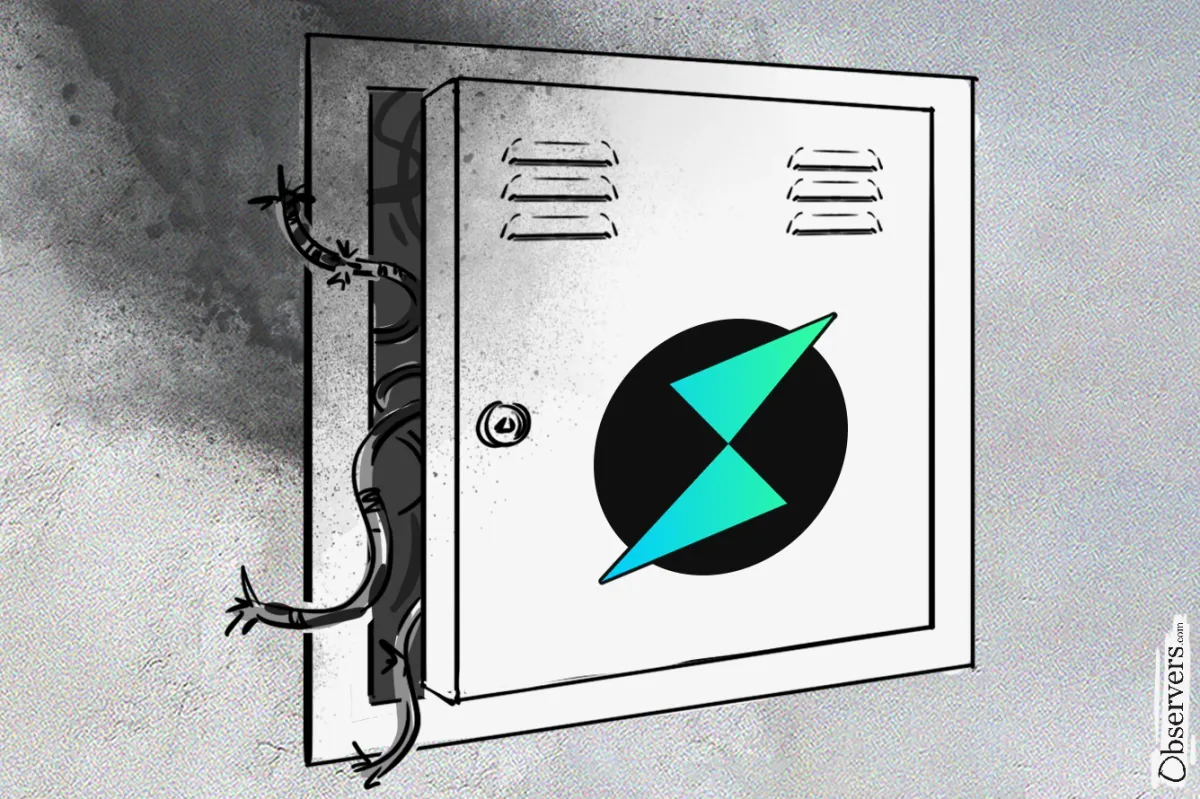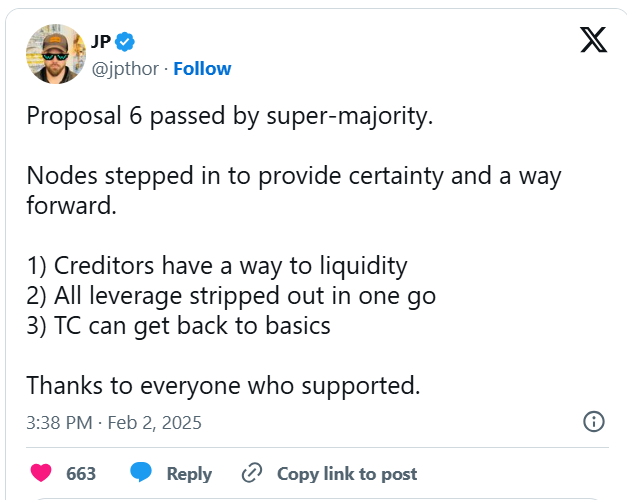
Decentralized Exchange, But Not Boring
Founded in 2018, THORChain is a decentralized liquidity protocol that enables cross-chain swaps, allowing users to trade assets like bitcoin, ether, BNB, and DOGE. Unlike Uniswap protocol, which is deployed on a single chain and can only swap digital assets circulating on that chain, THORChain is designed to connect and trade on multiple chains. The protocol is built with the Cosmos proof-of-stake blockchain development kit and uses its tools, such as IBC, to connect to different blockchains. Its native token, RUNE, acts as the settlement asset and ensures liquidity across the network.
Thorchain's primary service is THORSwap, which facilitates these cross-chain exchanges. Like in other decentralized exchanges (DEXs), liquidity is provided by users who deposit currency pairs in respective pools and earn a share of the trading fees.
In 2022, the team introduced the THORFi service, which allowed users to deposit digital assets such as bitcoin and ether in single asset pools. The new service was indeed innovative and convenient; there was no impermanent loss or any other common problems of DEX Liquidity Providers. In 2023, the protocol also added a borrowing service, which further extended the services for the users. However, these services exposed the protocol to risks that do not exist in pure DEX operations, such as an open position on the deposit asset and an imbalance of the deposited and borrowed positions in various cryptocurrencies.
Hidden Bitcoin Short Trade by THORChain
By design, the yield on THORFi deposit services is financed by the fees earned in the DEX service operations. To earn those fees, the funds deposited in the "single-sided" pools were internally re-allocated to the DEX service pools by splitting them 50:50 between the deposited asset and RUNE.
Similarly, the collateral for the THORFi borrowing was internally swapped to the borrower's desired debt asset, leaving any imbalances in the asset positions on the protocol books.
If digital assets were distributed equally in single-sided pools, the mechanics would operate flawlessly. However, in both deposit and lending services, bitcoin dominated the assets that were deposited or pledged on THORFi. The protocol automatically swapped the funds for other assets, effectively shorting bitcoin. Combined with the bitcoin price increase, this created a net liability position for THORChain.
THORChain Is Insolvent
On January 23, 2025, a community member known as TCB publicly highlighted concerns about THORChain's financial health, stating that the protocol was insolvent. TCB outlined that THORChain had approximately $200 million in liabilities, with $97 million attributed to lending and $102 million to deposit services. Following this revelation, the community took steps to address the issue, including pausing certain operations to prevent a potential "death spiral" of mass withdrawals.

In response to the insolvency concerns, THORChain's node operators voted to temporarily suspend redemptions for the platform's DeFi offerings, enacting a 90-day freeze period for withdrawals. This pause was intended to provide time for restructuring and to safeguard liquidity providers. Following the suspension, some node operators chose to leave the protocol, reflecting concerns about its financial stability and future prospects.
From Debtors to Shareholders of THORChain Protocol
On February 2, THORChain's governance body passed Proposal 6 for creating a new TCY (Thorchain Yield) token with a supply of 200 million. Instead of getting their bitcoin or ether back from the protocol, borrowers and depositors will receive TCY tokens, effectively turning their debt claims into equity in the THORChain protocol.

TCY tokens will be distributed at the rate of one token per $1 of debt. The initial price of the token is expected to float significantly below the $1 mark. However, holders of TCY will be entitled to 10% of THORChain's revenue in perpetuity, which, in case of successful operations of the DEX, is expected to bring the token price to its nominal value in 5-8 years.
In the same proposal, the team chose to retire THORFi operations and make the DEX boring again.

